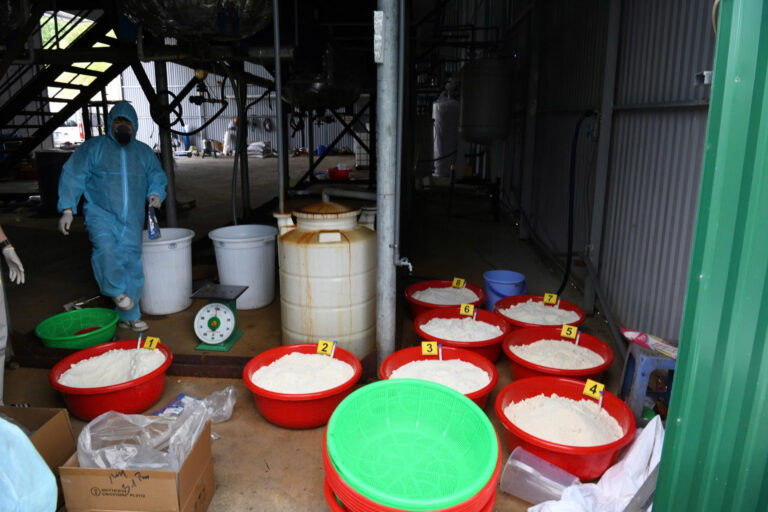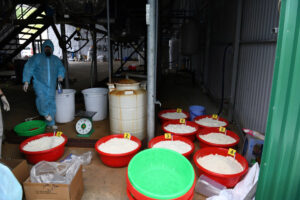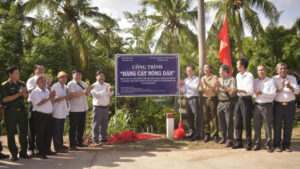Recent encroachments at Cổ Loa Ancient Citadel that threaten to destroy the important historical site have experts and members of the public worried.
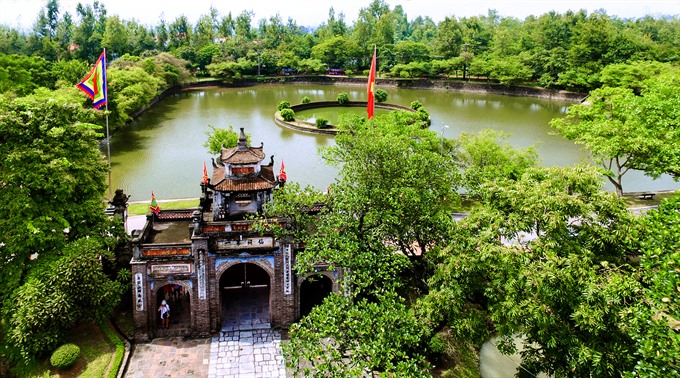
National treasure: Remnants of the once-royal Cổ Loa Citadel. Photo khaocohoc.gov.vn
Experts have cautioned that time is running out to implement proper solutions to save the site.
Cổ Loa Citadel was the capital of the Âu Lạc Kingdom under King An Dương Vương’s reign in the third century BC. Scientists have called the 2,300-year-old citadel the most ancient large-scale structure of its kind and noted its unique structure and place in the early history of Vietnamese citadels and defensive structures.
The citadel originally consisted of three concentric circles of walls paralleled by defensive canals. The huge outer wall had a circumference of eight kilometres, while the middle wall was 6.5km and the inner wall was 1.6km.
Damaging encroachments at the ancient site are not new.
Lê Viết Dũng, deputy director of Cổ Loa Relic Management Board said as many as 1,000 households had lived at the citadel relic site for generations. Some families had been living within the walls for 300 years.
“The families were here long before 1962, when the place was recognised as a National Relic Site,” he said. “Before 1962, the site was not managed by any agency and people were free to build houses.”
“In 2006, those families were granted land use certificates under the Land Law, which unintentionally created a contradiction between preservation efforts and real-life considerations,” he said.
According to reports by the Thăng Long – Hà Nội Heritage Preservation centre, there were 39 reported cases of encroachment in 2015, 36 in 2016, and 25 in 2017. Twenty-one cases were reported in the first nine months of this year.
Parts of the ancient earth walls have been knocked down to make room for roads and buildings. The innermost wall has been damaged beyond recognition, visible only in a few remaining dirt hills.
The middle and outer walls retain their form, although they do not stand as tall as they once did.
Residents have filled in the canals surrounding the walls to build houses, or else have used them to plant rice and grow fish, distorting their original form.
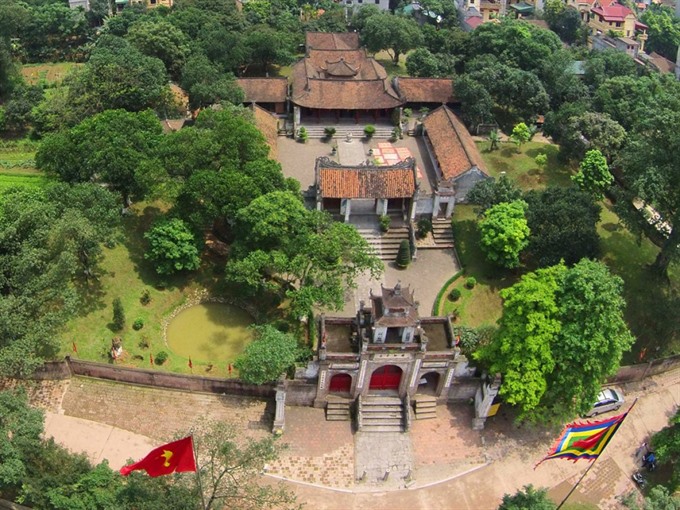
Fading beauty: An aerial view of Cổ Loa Citadel. Photo phapluatdansinh.com
The Đồng Vông architectural site along the Hoàng Giang River is on the verge of being completely erased by private residential houses.
Dũng said the tragedy of Cổ Loa was that the site had been under overlapping and conflicting management by several public agencies.
“The management board controls only the temples, communal houses, water wells, gardens and ponds while the walls, canals and the Hoàng Giang River are under the control of Cổ Loa Commune authorities,” he said.
Although the reported number of violations had decreased over recent years, experts said individual cases had gotten more serious.
Prof Lại Văn Tới of the Institute of Imperial Citadel Studies said the involved agencies had tried to protect only the core of the site. They preserved the communal houses and temples but left the walls, canals and river – the elements that form the citadel’s unique structure – unprotected.
“Violations are getting more and more serious,” said Prof Nguyễn Văn Huy. “If management agencies fail to take quick action, the ancient walls and canals will completely disappear in the near future.”
Huy said the continued encroachments displayed a lack of awareness among the public and showed the 60 years of poor management at the heritage site.
Prof Lâm Mỹ Dung from Hà Nội University of Social Sciences and Humanities said the managerial failures were a result of inadequate co-operation between researchers and management authorities.
“I realise that economists dislike archaeologists,” she said. “Scientists have had to agree to turn the site into an economic asset to preserve our heritage. No one seems to think we should protect our heritage for the sake of pride.”
Trần Đình Thành, deputy director of the culture ministry’s Heritage Department, admitted the site had hosted residents before 1962.
“That is why there are buildings, houses, factories and roads,” he told the Dân Trí newspaper.
A 2015 preservation plan approved by the Government provided a legal basis to gradually reduce violations and turn the site into a cultural and historical park for tourists.
“I think with the master plan, the site will be managed better,” he said.
“Visitors can plainly see that tourism has not been developed at the site,” said Prof Huy. “People flock here during festivals in the beginning of the Lunar New Year, but it is almost deserted the rest of the year.”
"Tourists explore the temples but hardly pay attention to the walls and canals of the ruined citadel," he said. VNS



